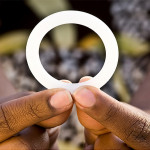Various factors are associated with a higher risk of death during the year after people with a CD4 count below 100 start HIV treatment, including having a very low CD4 count, a high number of physical symptoms, weight loss, problems with self-care and various abnormal lab test results, aidsmap reports.
Publishing their findings in Clinical Infectious Diseases, researchers from the REALITY trial conducted an analysis of factors associated with mortality after 48 weeks. A total of 1,711 people living with HIV in five sub-Saharan African nations, including adults and children age 5 and older, were enrolled in the prospective clinical study; all of them had a CD4 count below 100 when they were diagnosed and immediately started antiretroviral (ARV) treatment.
A total of 203 (12 percent) of the participants died within 48 weeks. The researchers found that mortality was independently associated with older age, a lower CD4 count, lower albumin (an indication of inflammation, shock or malnutrition), lower hemoglobin (a protein in red blood cells that carries oxygen throughout the body), weaker grip strength, moderate to severe weight loss, problems with mobility, vomiting and problems with self-care, such as bathing and dressing.
Particular constellations of factors were associated with a higher risk of death. Among one group with certain commonalities, 25 percent died; those in this group had a median CD4 count of 28, a high number of physical symptoms, weight loss, poor mobility and low albumin and hemoglobin. In another group that had a median CD4 count of 43, weight loss and blood test results indicating inflammation or infections, 11 percent died. And there was a 10 percent death rate in a group in which the median CD4 count was 27, but the individuals had few physical symptoms and had not experienced a drop in fat mass or body weight.
To read the aidsmap article, click here.
To read the study abstract, click here.







Comments
Comments